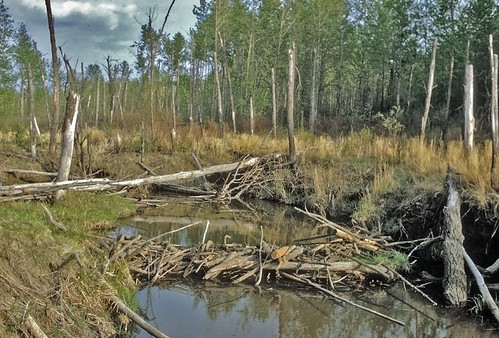
The Forest Service is known for developing partnerships to get the greatest good out of scarce fiscal resources. On the Wallowa-Whitman National Forest one of the partners is four-legged.
Human activity has damaged the habitat for many species in and around the streams and rivers in eastern Oregon.
The Forest Service hopes to reverse these decades of neglect by first restoring beaver habitat and enticing the animals back in several tributary streams of the North Fork Burnt River.
“Beavers have a knack for environmental restoration,” says Suzanne Fouty, District Hydrologist for the Whitman Ranger District.
“As they build their dams in streams they transform those systems from single thread channels with narrow riparian zones to complex systems with wide riparian zones. Beaver dams enhance watershed conditions by raising the water table in the valley floor leading to more forage, diversified and improved wildlife and fisheries habitat, and improved flood control,” she explained.
The work, in partnership with the Powder Basin Watershed Council, Oregon Department of Fish and Wildlife, Oregon Watershed Enhancement Board, and Whitman College, will mean that stream and riparian systems, and the plant and animal communities that depend them, will be less sensitive to climate variability and climate change.

The goal is to have beavers establish a core zone of stable beaver dam complexes that will allow them to expand their water storage and modification influences outwards into other tributaries.
“It’s exciting to be part of a project that has multiple partners, can begin to yield results within a couple of years, is cost effective and produces multiple environmental and economic benefits,” says Fouty.
“Ranching, logging, mining, recreation, roads and beavers are not mutually exclusive but changes do need to occur in how people do those things if conflicts are to be minimized and benefits maximized,” explains Fouty.


